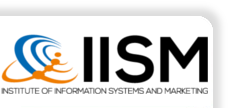| Bibliography | John D. Sterman. Business Dynamics: Systems Thinking and Modeling for a Complex World. McGraw-Hill, 2000. |
| Content of teaching | Corporate growth, the diffusion of new technologies, business processes, project management, product development, service quality management – all these are examples for application areas of business dynamics. They all are dynamic systems that are characterized by feedback loops between many different variables. By means of the tools of business dynamics such systems can be modelled. Simulations of complex systems allow the analysis, the goal centered design, as well as the optimization of markets, business processes, policies, and organizations. |
| Annotation | The course is generally held as block course. |
| Workload | The total workload for this course is approximately 135 hours (4.5 credits): Time of attendance
Self-study
Sum: 135h 00m |
| Aim | Students
|
| Exam description | Assessment consists of a written exam of 1 hour length following §4 (2), 1 of the examination regulation and by submitting written papers as part of the exercise following §4 (2), 3 of the examination regulation. The course is considered successfully taken, if at least 50 out of 100 points are acquired in the written exam. In this case, all additional points (up to 10) from excersise work will be added. Grade: Minimum points
The grade consists of approximately 91% of exam points and 9% of exercise points. |
Business Dynamics
| type: | Vorlesung (V) | links: | weitere Informationen |
|---|---|---|---|
| semester: | WS 17/18 | ||
| time: | 2017-12-15 08:00 - 17:15 täglich 20.20 RZ Raum 167 20.20 Kollegiengebäude am Zirkel, Teil 1 2017-12-16 08:00 - 17:15 täglich 20.20 RZ Raum 167 20.20 Kollegiengebäude am Zirkel, Teil 1 2018-01-19 08:00 - 17:15 täglich 20.20 RZ Raum 167 20.20 Kollegiengebäude am Zirkel, Teil 1 2018-01-20 08:00 - 17:15 täglich 20.20 RZ Raum 167 20.20 Kollegiengebäude am Zirkel, Teil 1 |
||
| lecturer: | Dr Paul Glenn Prof. Dr. Andreas Geyer-Schulz |
||
| sws: | 2 | ||
| lv-no.: | <a target="lvn" href="https://campus.studium.kit.edu/events/ua3PsakaRQioRaVs_yOBBg">2540531</a> | ||


